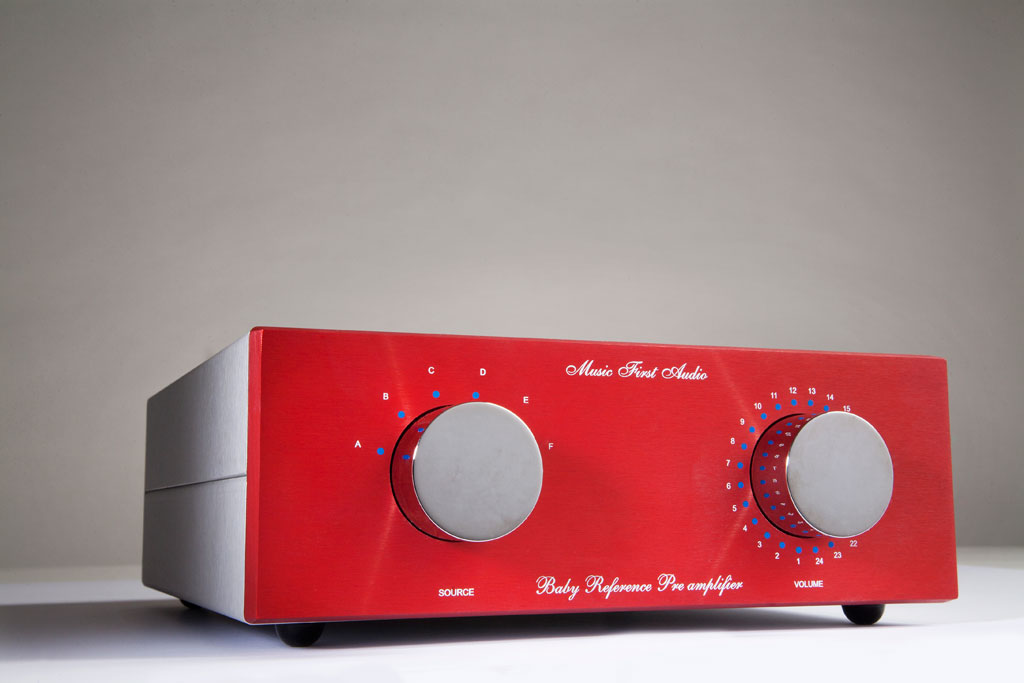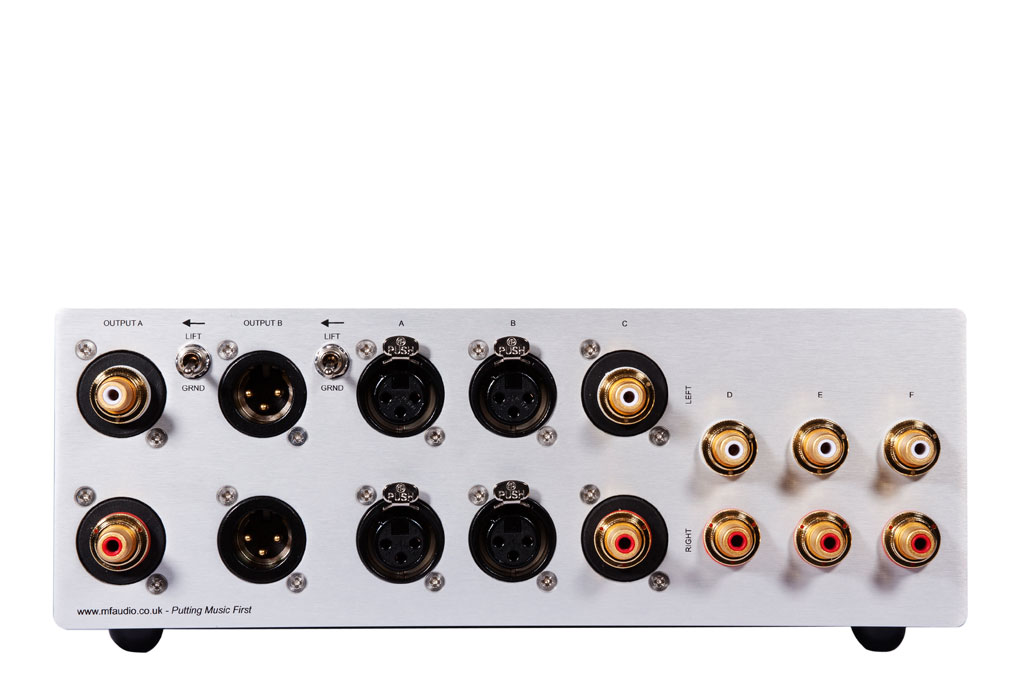“Simple means purer,” I have often thought as I have worked through a cornucopia of two channel devices that diminish the purity of the audiophile experience. This is not to mention the plethora of devices with ear buds with pretense to good sound. These may be repositories of information, but they certainly are not repositories of great sound. They are all very cool and techie, but miserable sound quality seems to be the collective curse.
Closer to home in Audiophile Land I shudder when I see discussion of system building where an individual disparages aftermarket cables, yet has jammed a processor into the signal path. I am discouraged by the proliferation of power conditioning, power filtering, power “transforming” – not to mention all the quantum crap – being glommed onto by enthusiasts which degrade the signal as much as supposedly help. A long time ago there was an axiom that the best sound was to be obtained via the shortest signal path. With all the active, as well as passive, electronics being crammed into systems nowadays it’s a wonder people have a semblance of good sound at all.
What is an ardent audiophile to do? In a word, simplify! Once a person has simplified the signal path between components, attention can be turned to streamlining the components themselves. Audiophiles tend to form strong opinions about the supposed merits of a separate phono preamp, transport and DAC or monoblock amps, but the functionality of a stereo preamp is different. The typical hobbyist is going to need one, and often the default solution is the active, or powered, preamp. While one can jump between similar active preamps in an effort to improve quality there is a more extreme solution that radically streamlines the operations of the preamp and manipulates the signal less, thereby achieving the goal of simplifying the component, resulting in less degradation of the source signal.
In the last few years, increasing numbers of preamps having passive attenuation have been designed at a wide range of prices. (Such devices should more accurately be called “linestages” or simply “attenuators,” as they do not amplify the signal. -Ed.) Often, like the Cambridge Audio Azur 840E which I reviewed, listening level is controlled via a laddered resistive network. Conversely, a TVC (Transformer Volume Control), such as is found in the Music First Audio Baby Reference Preamplifier, takes the principle of simplicity a step further. It is essentially a custom transformer controlled by an ELMA brand 24-position switch built to military specifications. The transformer is not just another mass produced item slapped into a chassis, but is a hand-wound wonder.
A lovely chat with company owner Jonathan Billington yielded insight as to the care taken to produce such transformers. In the 1960’s, Jonathan’s father and Mr. Stevens had been involved in production of transformers for more widespread use. In 1971 the two men parted company, but when his father passed away in 1978 Jonathan approached Mr. Stevens to collaborate, thus reviving Stevens and Billington. In addition, Jonathan set out to obtain an EE degree specializing in acoustics and by 2003 was placing a focus on volume transformers. A new company, named Music First Audio, succinctly proclaimed its vision – to put the priority on the music first.
A Music First Audio transformer is a device that may appear simple to the eye but is more involved than suspected. Though microprocessor controlled machines are utilized in the general manufacturing process, making such a transformer requires a high degree of human labor; only one pair can be wound per day. Numerous “starts and finishes,” or individual strands of wire, some of differing gauge depending upon the model, are joined to build the transformer’s winding. Symmetry is critical; for a transformer to be transparent sonically it must be as close to perfectly symmetrical as possible. The transformers were initially only available in copper, but requests from customers prodded Jonathan to add silver versions.
The terms “autoformer” and “transformer” are sometimes used interchangeably by novices, but Jonathan was keen to describe the differences as he feels a transformer yields higher purity of signal, and consequently better sound. An autoformer is a single coil with a common point between the input winding and the output winding and a common connection between the input and output grounds. A Music First Audio transformer uses two windings, a primary and secondary. There are no common points between the input and output grounds, which makes it less susceptible to ground loop hum. In the event that a ground loop does manifest itself, a Ground Lift Switch can lift the input ground from the output ground, thus killing the hum.
I found the Ground Lift Switch to be helpful as in some systems I set up — for example, in my Legacy Audio XTREME HD Subwoofers review, there was an unavoidable low-level hum even though I was using balanced connections. It also happened when I used the Baby Reference, but merely flicking the Ground Lift switch killed it. There are few things as gratifying to a concerned audiophile seeking a perfect performance than with a toggle of a button silencing an annoying hum! I had been plagued with the hum during use of the VAC Signature Preamplifier MK2 and Pass Labs preamps, which had been silent with all manner of speakers previously but noisier with the subwoofers. Now, with the Baby Reference, I could reinsert them silently into the rig.
In terms of concerns, I was concerned initially that the use of silver in the transformer windings might skew the preamp toward the thinner and brighter end of the sound spectrum; I have found such characteristics in silver OFC cables over the years, especially those with many small braided conductors. I feared that I would not be able to achieve the ripe, full sound I associate with the highest echelon of systems. I typically use all copper, or perhaps a hybrid mix with a majority of copper cables in my systems.
- (Page 1 of 3)
- Next page →


